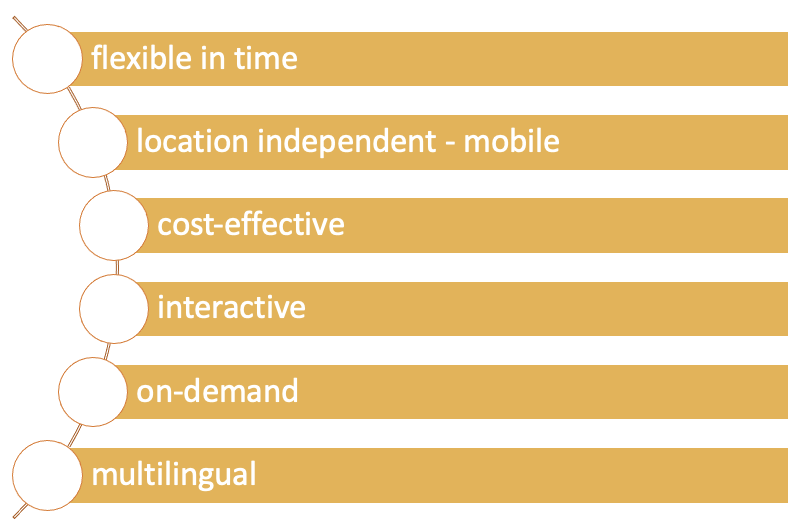Microlearning is one of the latest trends in continuing education. But what exactly is microlearning?
During the internal ordering processes from the Spanish subsidiary, costly errors or delays in delivery occur time and again. Unfortunately, the employee did not fully understand the English-language documents for the ERP tool.
The annual budget planning should be done centrally in the ERP tool. Instead, the division managers use the Excel spreadsheets from previous years because the ERP Tool is considered “too complicated”. Correcting the errors takes more time than the actual planning.
Do these scenarios sound familiar? The problem is usually not the employees, but a training concept that is not adapted to the target group. Most employees do not need several days of training at expert level, but only easy-to-understand instructions for concrete tasks.
A classic classroom training with a dozen participants, however, cannot address these requirements in detail. In practice, these instructions are then simply documented in a user manual, for the sake of simplicity in English for all employees worldwide. Employees end up with an 80-page collection of detailed information that still does not solve the employee’s problem.
Microlearning – what exactly is that?
But does the documentation necessarily have to be in a written document? With little effort, interactive e-learning courses can also be created as engaging learning nuggets. These learning nuggets are designed to be practical and relevant to the application. They are particularly short – often only a few minutes long. Therefore, they can be integrated into the learners’ daily routine. Learning nuggets lower the inhibition threshold for daily learning and are a central component of microlearning.
While there is no official microlearning definition, all microlearning-based training has one main feature in common: brevity. They can be either small learning units or short-term learning activities.
Peter Baumgartner, professor for technology-supported learning at the Danube University in Vienna, describes two main advantages of microlearning for knowledge management in companies:
Flexibility: the small learning units are not only quickly created, but also quickly supplemented with new content or corrected. In addition, they can be easily combined into different larger learning areas.
Reach: The unpretentious approach is based on “light” feet and is usually designed to be low-threshold. Microlearning therefore also reaches overworked employees who do not want to or cannot use their scarce time resources for elaborate educational efforts.
Microlearning delivers short blocks of content that learners can study at their convenience. The content can take many forms, from text to full interactive multimedia, but should always be short.

Advantages of Microlearning at the workplace
Practical example of microlearning
The following tips will help you prepare the content of effective training documentation – and your staff to use the ERP system without errors:
Task before function
Do not explain the function of the individual menu items, rather explain how a concrete task (e.g. creating an order or generating reports) can be carried out.Less is moreKeep the sessions short – your staff only want to complete a task quickly, not spend half an hour working through the training material. Short units of a few minutes are much more memorable.
Clear structure
Help your staff to select the relevant content directly. Nothing is more frustrating than having to painstakingly search for the right place in a long “user manual”. Content in html5 format allows searching even within multimedia content.
Use your eyes AND ears
Learning and understanding works through all the senses. Media and training concepts that are based only on reading a document or only on listening in a webinar are not very effective. Combine perception via eyes AND ears to strengthen learning comprehension, e.g. with explanatory videos set to music.
Speak the language of the employees
Even in a globalised world, we all have a mother tongue in which we can express ourselves better and absorb content particularly well. Not all people are born language talents. Imagine if you could create Spanish, Chinese or Portuguese versions of the instructions with little effort.
Here you can see an example of the task “Create shipping process in ERP”. The task is explained in German, English, Chinese and Spanish.
You are currently viewing a placeholder content from YouTube. To access the actual content, click the button below. Please note that doing so will share data with third-party providers.
Use existing content
Until now, creating and translating e-learning content was cumbersome and costly. An external agency was hired, but despite a detailed briefing, there were countless proofreading loops. The result was high quality but beyond the budget for widespread use after an initial pilot project. Use existing content in PowerPoint, and use the possibilities of artificial intelligence to translate and dub the content.